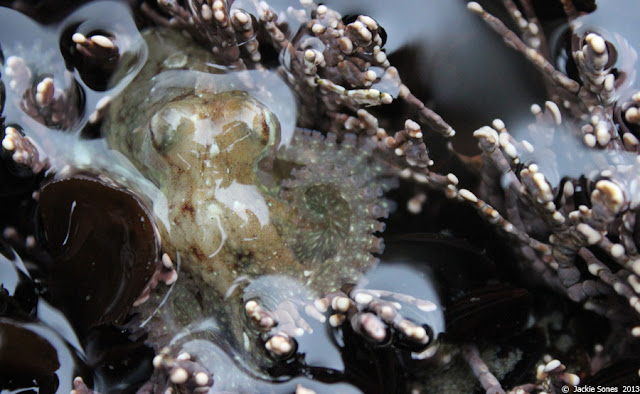So there I was, looking at this insect, thinking it might be an interesting wasp.
I had seen the narrowed abdomen or thread-waisted appearance (typical of wasps), but upon closer inspection, I noticed the single pair of wings and the "beaters" or vestigial wings immediately behind the first pair of wings. These rudimentary structures that no longer function as wings look like small yellow teardrops on either side of the thorax. In the photo above, look for them just in front of the last pair of legs. The "beaters" told me that this was a fly!
I started circling around to get a closer look. The head and eyes were very large, and check out the very long forked antennae in the next image. And what is that skinny black thing sticking up below the antennae?
Below is another view from the side. Now you can see the pale yellow face. And that skinny black thing appears to be a long narrow proboscis.
The fly took off, but landed again and I took one more picture before it disappeared.
I know hardly anything about flies, but I searched around on the Internet for some clues about the identity of this intriguing species.
I think it's a type of conopid fly. These flies are sometimes known as thick-headed flies. There's a good chance it's in the genus Physocephala. In 1957, Camras and Hurd wrote The Conopid Flies of California. Here's an illustration from that publication of a species similar to the one in my photographs:
The basic life history of conopid flies goes something like this —
they're internal parasites of bees and wasps. This means that they lay eggs inside the abdomens of adult bees or wasps. For example, the female fly pounces on the bee while in flight, inserts her ovipositor between the abdominal segments of the bee and deposits an egg. The fly larva develops inside the bee's abdomen. The bee is fine and continues to be active during the early stages of the fly's larval development. However, just before the fly larva is ready to pupate, the host bee dies, and then the adult fly emerges from the bee's abdomen.
Whew! I'm still curious about why they mimic wasps. Is it to avoid predators (that aren't as interested in eating wasps)? Or is it something completely different —
does this body design work better for high speed aerial maneuvers? What do you think?
P.S. These photos were taken at the north end of Bodega Harbor near Whaleship Road.




















































